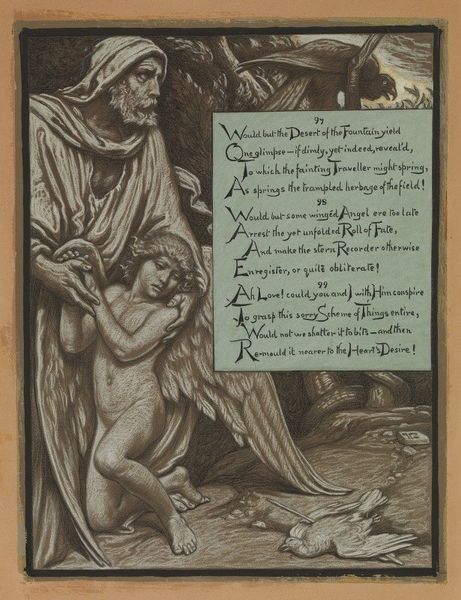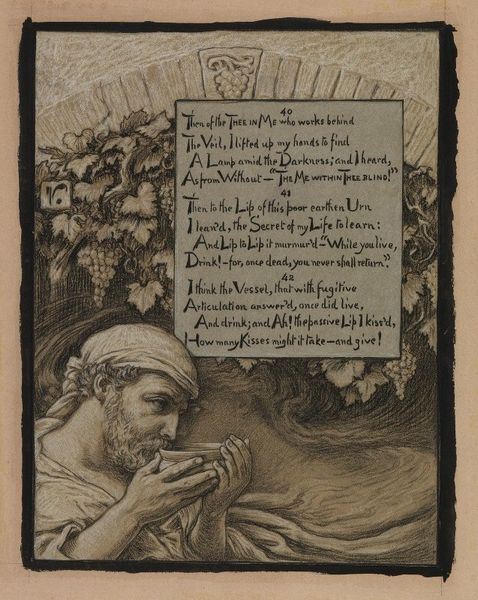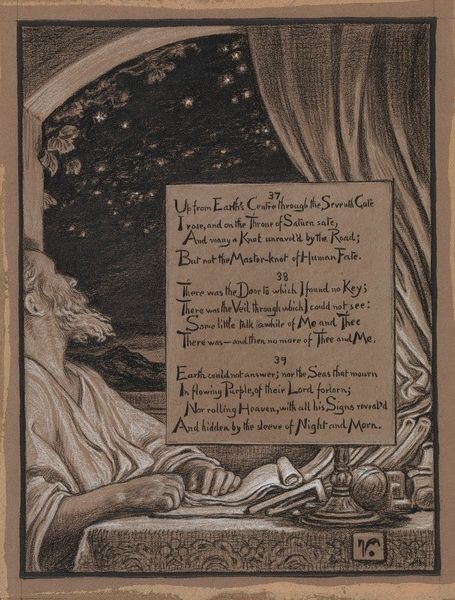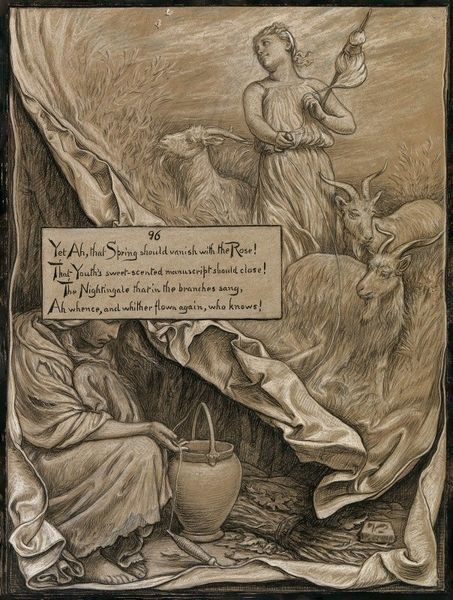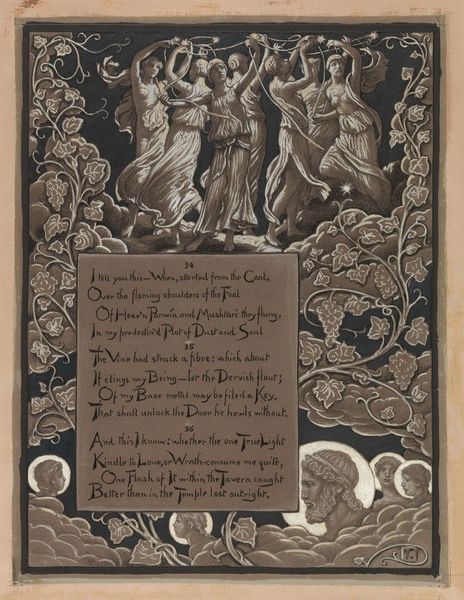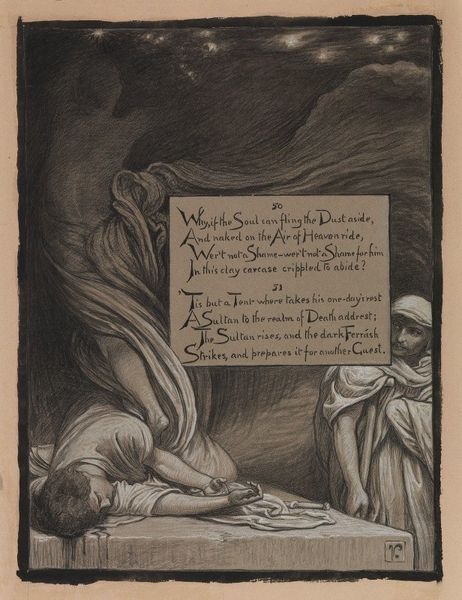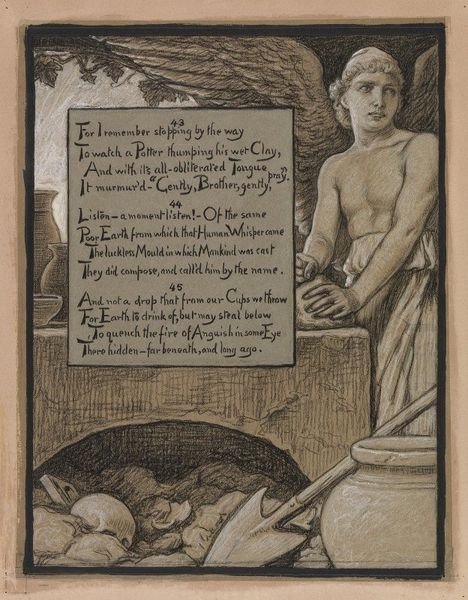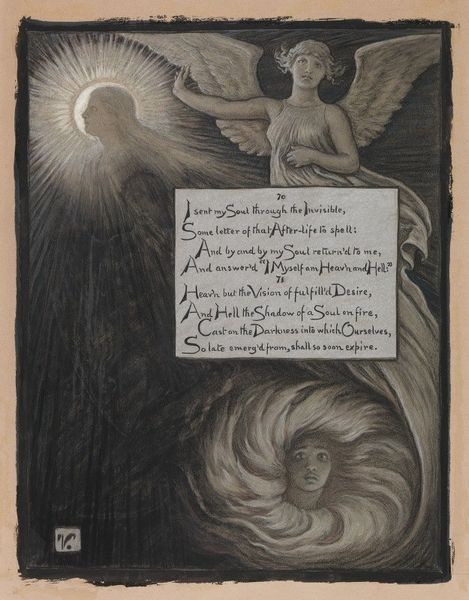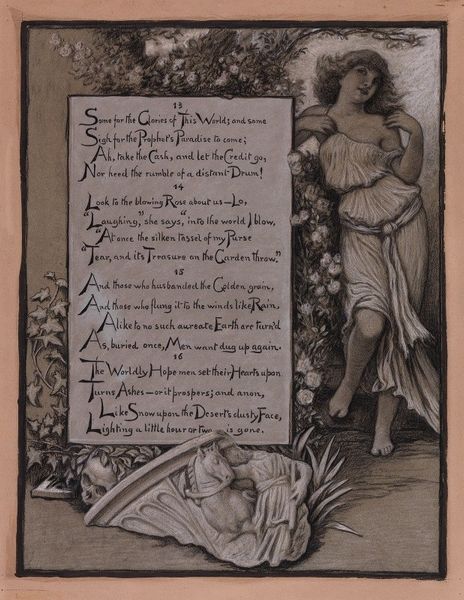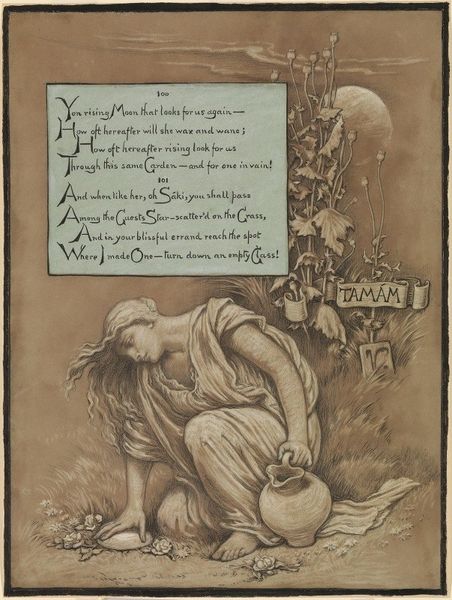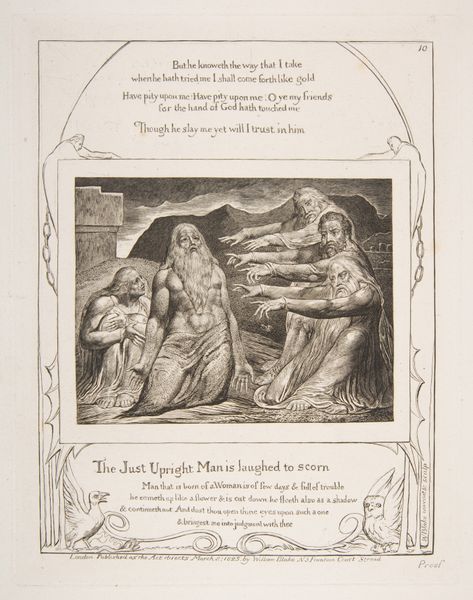
#
toned paper
#
handmade artwork painting
#
fluid art
#
coloured pencil
#
coffee painting
#
watercolour illustration
#
natural palette
#
pencil art
#
botanical art
#
watercolor
Copyright: Public Domain: Artvee
Editor: This intriguing artwork is "The Awakening" by Elihu Vedder, created between 1883 and 1884 using watercolour and colored pencil on toned paper. The muted palette creates a dreamy atmosphere, but there's also something unsettling about the figures emerging from the shadows. What’s your take on this piece? Curator: The use of these literary and historical illusions, coupled with its somewhat veiled eroticism, offered Vedder an accepted vocabulary to voice what could not be addressed explicitly in late 19th century America. In looking closer we see the artistic value, especially concerning symbolism. Editor: Symbolism? What kinds of symbols are at play here? Curator: Notice how Vedder juxtaposes the text from The Rubaiyat of Omar Khayyam with imagery reminiscent of both classical and Pre-Raphaelite art. This, during a period of social and political upheaval where old paradigms were being dismantled and questioned, helped fuel artistic exploration. The visual and the literary interact, creating a rich tapestry that encouraged contemplation on topics such as mortality. Why include these passages instead of the more overt symbolism of the figures alone? Editor: It allows him to reach a broader audience, connecting to common shared experiences of life cycles, death and rebirth in more subtle but easily digested ways. The political discourse would fly under the radar while opening more complex conversations around identity through this accessible narrative style. Curator: Exactly. The use of art becomes part of an ongoing social discourse that shapes perceptions and norms. So what do you make of its significance? Editor: It’s fascinating to consider how Vedder used these visual cues to make his work relevant in both artistic and social dialogues. I'll never look at this in the same way again. Curator: Indeed, it really highlights how an understanding of the socio-political context adds so much to appreciating a work of art.
Comments
No comments
Be the first to comment and join the conversation on the ultimate creative platform.
